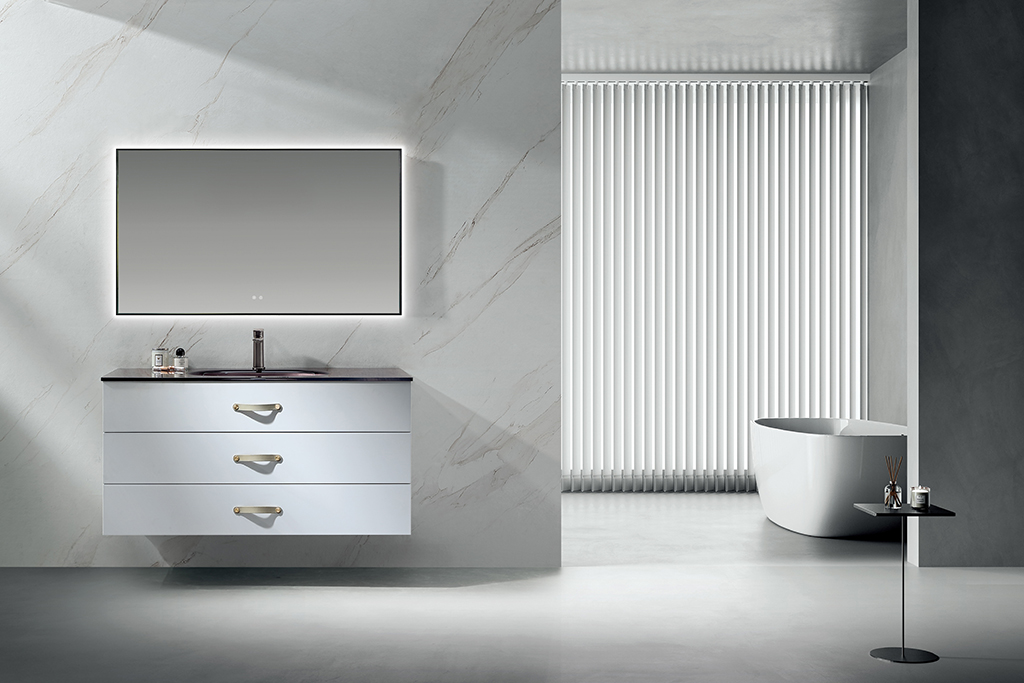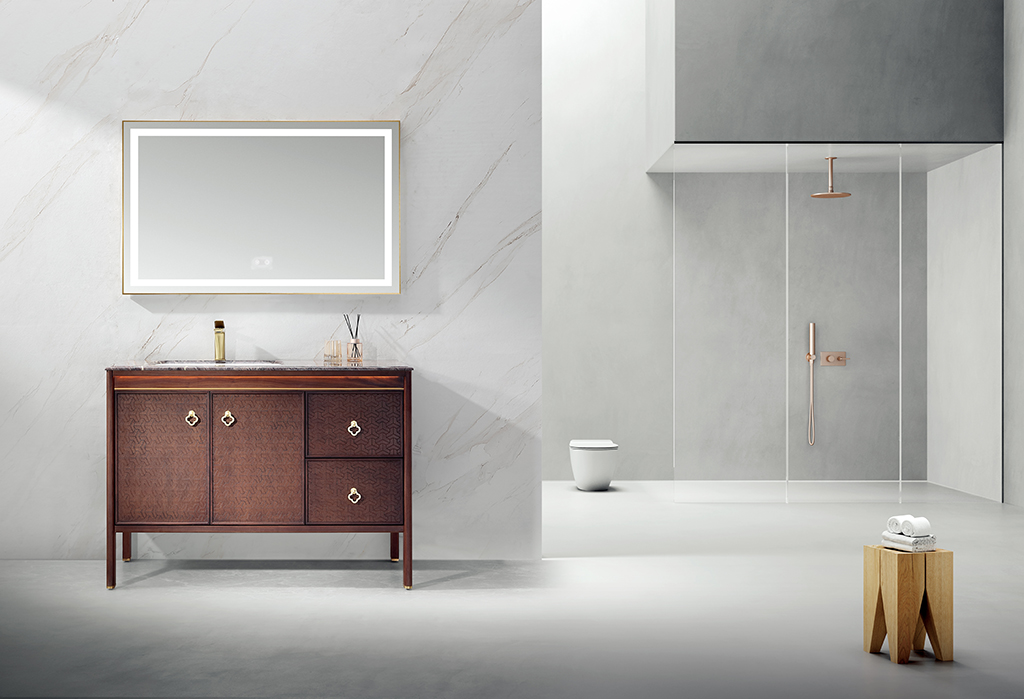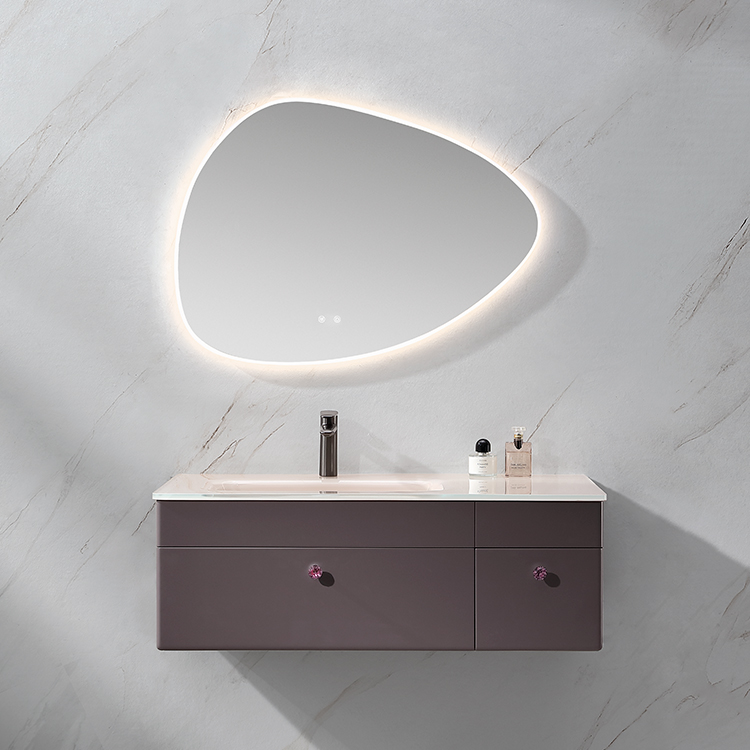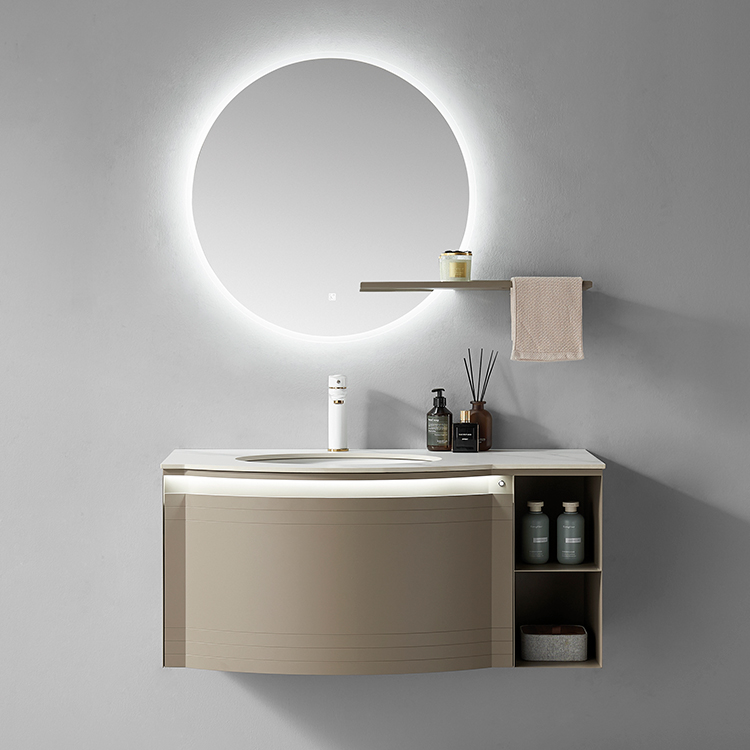When planning a bathroom remodel, one of the most important decisions is selecting the right material for your bathroom cabinet. The material affects not only the cabinet's appearance but also its durability and maintenance needs in a humid environment. With options like a wooden bathroom cabinet, MDF bathroom cabinet, and stainless steel bathroom cabinet, understanding each material's characteristics can help you make an informed choice. Here’s an in-depth look at these popular bathroom cabinet materials and tips on how to select the most suitable one for your needs.
1. Wooden Bathroom Cabinet
A wooden bathroom cabinet is a timeless choice that brings warmth and a natural look to any bathroom. With various wood types available, from oak and maple to bamboo, wooden bathroom cabinets can suit a range of styles, from traditional to modern.
Advantages: Wood has a rich, warm appearance and provides a classic or rustic touch to the bathroom. High-quality woods like oak and walnut are durable, and with the right sealing, a wooden bathroom cabinet can withstand moisture effectively.
Disadvantages: Wood is naturally porous, which makes it vulnerable to water damage and warping if not properly treated. Wooden bathroom cabinets require regular maintenance, including periodic sealing or varnishing, to maintain their appearance and durability.
Best For: Wooden bathroom cabinets are ideal for larger bathrooms with good ventilation, where the natural look of wood can be showcased. They’re perfect if you’re going for a classic, farmhouse, or vintage aesthetic.
A wooden bathroom cabinet adds character to a bathroom and, when properly cared for, can last for years. However, it requires a bit more maintenance than other materials, so it’s essential to commit to regular upkeep if you choose this option.
2. MDF Bathroom Cabinet
An MDF bathroom cabinet (Medium Density Fiberboard) is a popular choice due to its cost-effectiveness and versatility. MDF is made from wood fibers bonded with resin and compressed, resulting in a smooth, uniform material that is stable and resistant to cracking and warping.
Advantages: MDF bathroom cabinets are budget-friendly and offer a smooth surface that’s easy to paint or coat with laminates or veneers. This allows for a wide range of finishes, from wood-like textures to high-gloss or matte colors. MDF is also less likely to warp compared to solid wood, making it a good option for humid bathrooms.
Disadvantages: While MDF bathroom cabinets are relatively moisture-resistant, they are not waterproof. Prolonged exposure to water can cause swelling or damage, especially at unsealed edges. MDF is also less durable than solid wood or stainless steel, and may chip or dent over time.
Best For: MDF bathroom cabinets work well in guest or secondary bathrooms where usage is less frequent. They’re also suitable for those looking for a modern or minimalist look, as they can easily be customized with different finishes.
An MDF bathroom cabinet is a versatile and affordable choice for many bathroom styles, particularly if you want to experiment with different colors and textures. However, it’s best suited for bathrooms where heavy moisture exposure is limited, as MDF is more susceptible to water damage than other materials.
3. Stainless Steel Bathroom Cabinet
A stainless steel bathroom cabinet is a durable, modern option that’s highly resistant to moisture, making it a practical choice for bathrooms. Stainless steel has gained popularity due to its sleek, industrial look and low-maintenance properties.
Advantages: Stainless steel bathroom cabinets are water-resistant, rust-proof, and easy to clean, making them highly suitable for the bathroom’s humid environment. They are also extremely durable and can withstand high levels of moisture without deteriorating. Stainless steel has a sleek, modern appearance that complements contemporary and minimalist bathroom designs.
Disadvantages: Stainless steel bathroom cabinets can be more expensive than MDF or lower-end wood cabinets. Additionally, they can show fingerprints and water spots, so regular cleaning is necessary to maintain their appearance. The industrial look may also feel too cold for some design preferences.
Best For: Stainless steel bathroom cabinets are ideal for high-use bathrooms, such as a primary or family bathroom, where durability is a priority. They work well in modern, industrial, or minimalist designs and are suitable for bathrooms with limited ventilation, as they’re highly resistant to humidity.
A stainless steel bathroom cabinet is a long-lasting, low-maintenance option that’s perfect for a sleek, modern bathroom. Its resilience to moisture makes it a great investment for bathrooms with high humidity levels.
4. Other Material Options for Bathroom Cabinets
In addition to wood, MDF, and stainless steel, there are other materials available for bathroom cabinets, each with unique features:
PVC: PVC (polyvinyl chloride) bathroom cabinets are affordable, lightweight, and waterproof, making them suitable for high-moisture areas. However, they may lack the premium feel of other materials.
Plywood: Often used as a compromise between solid wood and MDF, plywood is made from layers of wood veneers. It’s more resistant to moisture than MDF but can be more costly.
Glass and Acrylic: Some modern bathroom cabinets feature glass or acrylic doors, adding a unique design element. These materials are water-resistant but can be fragile and prone to scratching.
Each of these materials can be a good choice depending on the bathroom’s usage and design needs. PVC and plywood are particularly good for budget-friendly yet resilient bathroom cabinets, while glass and acrylic are more design-oriented choices.
5. Tips for Choosing the Right Bathroom Cabinet Material
With so many materials available, here are some key tips to help you choose the best bathroom cabinet for your needs:
Consider the Bathroom’s Humidity Levels: For bathrooms with high humidity or limited ventilation, a stainless steel bathroom cabinet or well-sealed wooden bathroom cabinet is ideal. Avoid MDF bathroom cabinets in such environments unless they have high-quality water-resistant coatings.
Determine Your Budget: If you’re working with a limited budget, an MDF bathroom cabinet or PVC option can offer functionality and style without breaking the bank. For a more durable and upscale option, consider solid wood or stainless steel.
Match the Material with Your Design Style: Wooden bathroom cabinets work well with traditional, rustic, or farmhouse designs, while stainless steel bathroom cabinets are ideal for modern and industrial styles. MDF bathroom cabinets offer versatility for various looks, especially if you’re aiming for a custom finish.
Evaluate Maintenance Requirements: Wooden bathroom cabinets require regular maintenance to prevent water damage, while stainless steel bathroom cabinets only need occasional cleaning to remove fingerprints and water spots. Choose a material that aligns with your willingness to perform upkeep.
Conclusion
Choosing the right material for your bathroom cabinet is essential to create a functional and long-lasting bathroom. Each material—whether a wooden bathroom cabinet, MDF bathroom cabinet, or stainless steel bathroom cabinet—has its advantages and considerations, depending on factors like durability, aesthetics, and maintenance needs. By evaluating the bathroom’s humidity levels, your budget, and your preferred style, you can select the most suitable bathroom cabinet material for your space.
A well-chosen bathroom cabinet not only provides essential storage but also enhances the overall look of the bathroom. With careful consideration of these material options, you can find a bathroom cabinet that meets both your functional requirements and style preferences.
READ MORE:















